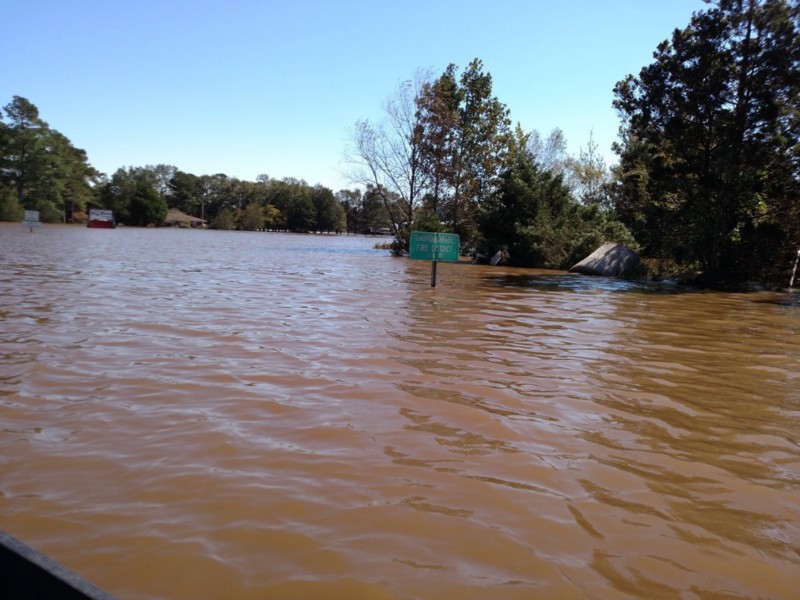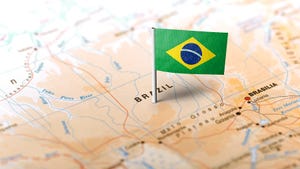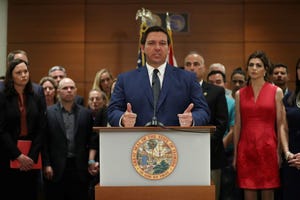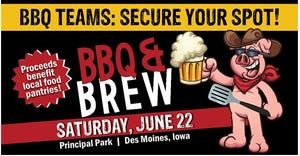Matthew couldn’t wash out pig care priority
We Care principles of ethical hog care were practiced to the “T,” despite hog producers in the southeastern U.S. having to battle Hurricane Matthew.

Preparation, dedication and cooperation.
Those three simple words are what make any successful hog operation, or farm in general, work smoothly. Jan Archer, president of the National Pork Board and a producer from Goldsboro, N.C., says those three words had a greater significance recently as her home area was hit hard by Hurricane Matthew.
Archer and her husband, Jack, operate Archer Farms LLC, a farrow-to-wean operation, and as hurricane warnings became stronger, it was decided that Jack would move to the farm to make sure the pigs received good care, even as the farm would soon be cut off from the Archer home 18 miles away by rising floodwaters. “We’re not unique in that,” she says. “Whenever there is threat of a bad storm, regardless of what it is, someone will go stay at the farm.” Hog care comes first.

Jan Archer
Jan Archer“He definitely drew the long straw,” Jan says, “because the farm has a generator, a pull-out couch, the all-important coffee maker, a refrigerator … So you’re comfortable, but you’re isolated.” Jack moved to the farm on Oct. 8, and didn’t leave until Oct. 12. He couldn’t, all the roads were blocked.
“I have raised pigs in a lot of different states, and a lot of different countries, and the people who know what’s going on in situations like this are the truck drivers, the truck drivers rule the world,” she says. “When we had to figure out how to get in, how to get out, how to get feed, we would call the truck drivers. … they hauled supplies, water, and things on their trucks, because feed truck drivers are an amazing lot. There were our walking-around GPS system.” Truck drivers not only knew the routes, they knew which routes were open.
Archer credits truck drivers with being the lifeline between the outside world and the farms that became islands in the flood waters. “People not only had feed, they had generators,” she says. As good as truck drivers are, some farms simply were unreachable by land, so helicopters came to the aid of dropping generators and people to farms to make sure pigs would receive proper care.
“Even though the waters are so much higher than with Hurricane Floyd (in 1999), we fared so much better this time around and it was because of preparation, dedication and cooperation, people working better.” Loss of animal life and lagoons weathered the storm so much better than in 1999. About 3,000 hogs perished as a result of Hurricane Matthew, as where 21,474 died at the hands of Hurricane Floyd.
When Floyd ravished the area in September of 1999, 50 hog manure lagoons were flooded and six lagoons were breached, while Matthew’s heavy rains flooded 11 lagoons with zero lagoon breaches.
Archer says their hog farm lagoon is in good shape, since it was at a low level prior to Matthew dumping up to 18 inches of rain on the area.
“I am really proud of the fact that the pork industry developed the six We Care principles, and I will tell you that over the past week, I have seen these ethical principles lives out in a way I never expected, a way I never hoped to see, but I am so gratified that I can really confidently talk about how pig farmers really live those six principles every day in everything they did.” That included taking animals off the farms before the hurricane hit, staying with their animals during the storm, they always made sure their pigs had feed and water. “My house didn’t have electricity, or coffee,” she says, “but the farms were all taken care of. The pigs always came first.” After the pigs were taken care of, Archer was heart-warmed to see the people on the upside of the Neuse River reaching out to those who maybe needed help. “People are driving generators all over, regardless where they’re needed. It’s really amazing to see what people will do to help out others.”
Archer says part of the preparation is to run drills, and she says the NPB is currently going around the country doing a crisis drill concentrating on diseases, such as if Foot and Mouth disease would hit, working with first responders. “Every integrator has a crisis drill and plan in place,” she says, “but yes, every crisis is a little different and throws something at you that you hadn’t thought of before.”
Hurricane Matthew presented the twist of washed out roads, as where Floyd only flooded roadways. “This storm destroyed roads,” she says, “there was so much more water this time, that the sheer force of the water destroyed the roads. If the water was coming and you had to get animals off the farm, the roads have to be in shape to be able to do that. We learned we have to be prepared with trucks with rock to repair roads quickly, maybe not permanently, but quickly to be able to get people and animals to safety.” That preparation will now be added to the plan for future crises.
Industry outlook
Speaking of crisis, the pork industry nationwide finds itself in a less-than-desirable situation. “We are victims of our own success,” she says, “we went through some devastating losses with PED and then came back stronger than ever. That’s the nature of agriculture in general, when faced with a challenge we’ll rise to meet the challenge and then exceed it. That’s what has happened here, an awful lot of pigs are coming to market, certainly a challenge for producers. We’re losing money right now. When you look at margins across the board it’s pretty frightening.”
That, however, presents an opportunity for consumers as they can benefit from the prices they will see in the pork case this fall and winter. “Pork is such a versatile product,” she says. “There is a reason pork is the No. 1 consumed meat in the world. I have lived in several other countries and I have seen firsthand how people value pork as a meat. … People have learned it’s delicious and flavorful, and now it’s going to be so affordable, and I hope the consumer takes advantage of that.”
Archer sees export markets being key for driving pork product around the world, and though policy is not under the NPB’s bailiwick, she realizes that the U.S. needs to be a part of the global trade discussion and currently the passage of the Trans-Pacific Partnership would be a big step in the right direction.
The current hog business climate will have the industry tightening its collective belt “to the point that it’s going to be uncomfortable”, and Archer predicts “that we will unfortunately probably lose some producers who cannot tolerate the low margins for the length of time it looks like we’re going to see them.”
More shackle space coming online will help, as there will be competition for that added shackle space, “but what are we going to do with that product? We simply have to increase our exports. And not only in value, because our export values are good, but in volume, we really need to move this product.”
Moving the pork product will call for the NPB to step up its game, and collaborate with retailers and packers, “we’re going to have to innovation to create new products” she says, “We’re got some great people working on creating some new cuts, smaller muscle cuts more appealing to smaller families.”
Archer, 60, has been in the swine business for 40 years, and the hog has changed over that time. When she first started raising hogs, they finished out at 220 pounds, and she has seen that weight creep up. “I understand the costs in the packing plant per shackle space, but that does present some marketing challenges in large cuts of meat.”
Adapting to challenges has always been a strong suit for hog producers, and Archer believes that the U.S. industry will be not different this time around, “but not without some struggles, and not without sacrifices.”
Pork Month message
Archer says consumers can feel really good about the pork they’re eating. “Not only is it delicious, and a great value, but it’s raised by people who care about their product, and care about the animals on their farms, and care about the people who work on their farms, and they care about their communities.”
As for her fellow producers, Archer is “proud to be a member of this community, so proud to be somebody who produces a product that I am proud of, and I get to be a member of a group of people who serve their industry and community with such dedication and such honor.” As an example, as Archer enduring what Matthew was throwing her way, she says she cannot count the number of calls that she received from producers all over the country, “wondering what can we do, what do you need? We’ll fly something to you? Do you need warm bodies? We’ll come there and cook. It was just amazing, simply amazing. … people were willing to leave their farms, just to make sure we were alright. That means a lot.”
“I got into the pig industry because I love pigs,” Archer says, “but I stay in it because I love pig farmers.”
About the Author(s)
You May Also Like



